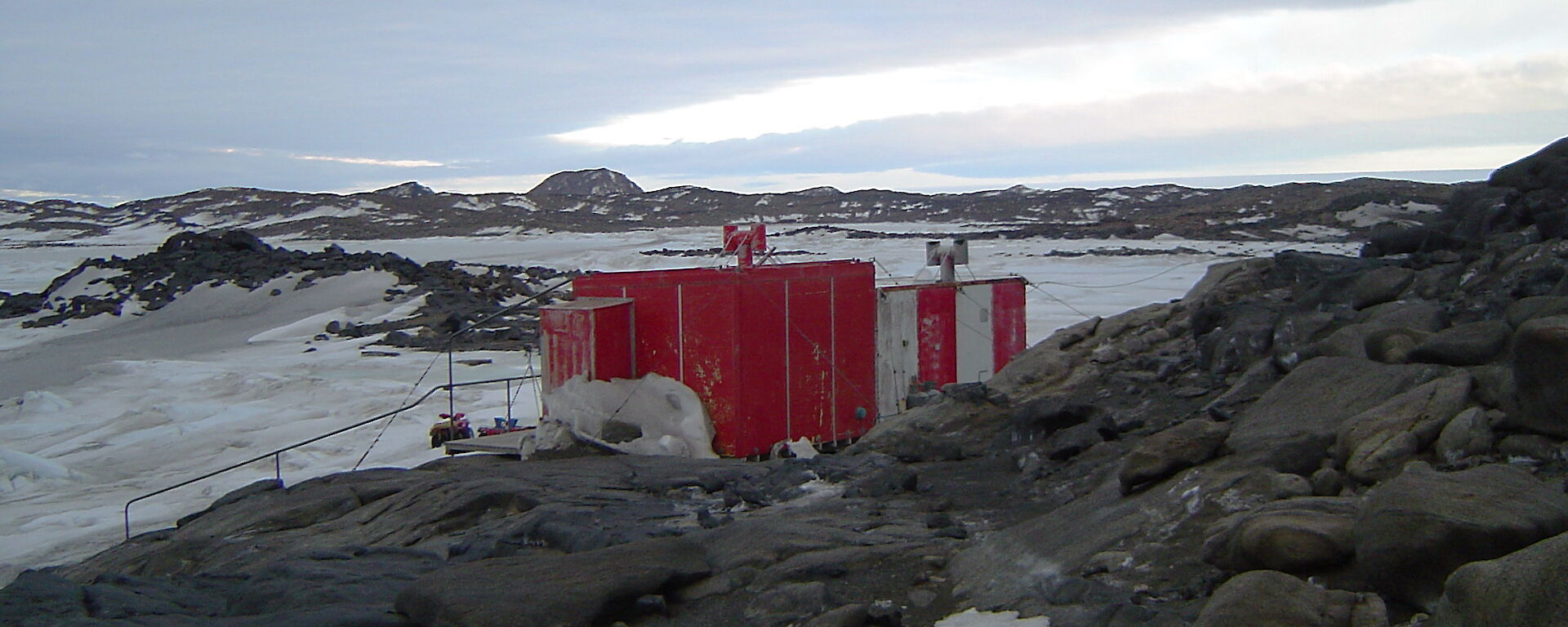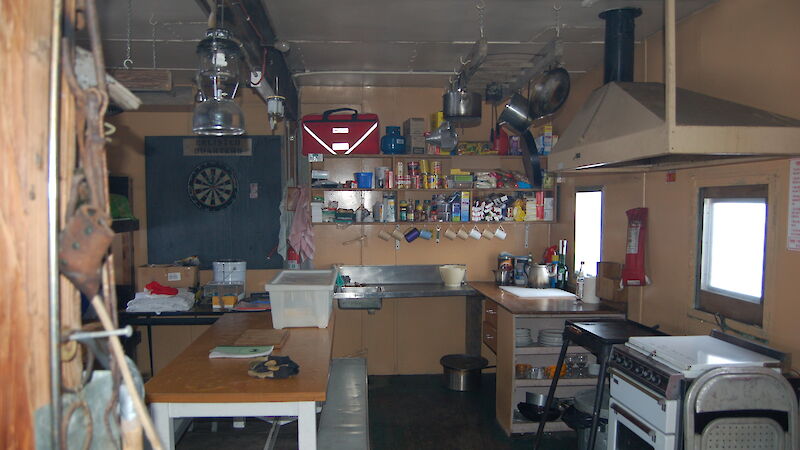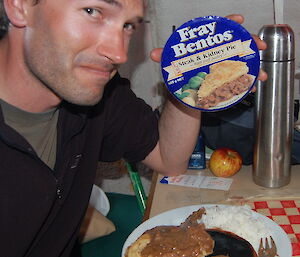Expeditioners living and working at Australia’s Antarctic stations, sometimes have the opportunity to stay out in the Antarctic wilderness in one of many field huts.
The field huts vary from square-shaped, wood-panelled cabins, to the unique and enchanting domed, fibreglass ‘apples’ and ‘melons'; each with an interesting story to tell.
The huts were constructed over the years to serve the various scientific studies conducted in the Australian Antarctic Territory, but are also used by station-based expeditioners on overnight hiking trips.
While some might argue that the aptly named Wilkes Hilton, near Casey station, is the most luxurious field hut on offer — the former transmitter room has been transformed into snug and inviting historic accommodation — there is history and comfort to be found in all of Australia’s Antarctic field huts.
Brookes Hut, for example, which has been overlooking Shirokaya Bay since the early 1970s, has a painted fresco adorning the range-hood above the kitchen cooker, and framed photographs of previous expeditions on the walls. Platcha Hut, whose name is said to derive from an abbreviation of ‘plateau chateau', has a rustic charm and location at the eastern end of Long Fjord that could be compared to chateaus of the Swiss Alps. It sits, seemingly forlorn, against the majestic backdrop of the Antarctic plateau, but is a welcome refuge when the temperature dips.
As part of the field huts' conditions of use, expeditioners are encouraged to bring their own food and drink. The huts do contain spare survival rations, which can be used if necessary, so long as items are later replaced.
One well known food item available in most survival ration kits is the Fray Bentos tinned pie. These distinctive pie puddings are renowned and either loved or hated. Some expeditioners have been known to request them for dinner on station, while others might liken their taste and appearance to an indistinguishable mix of meat and cardboard-like pastry. The picture on the tin provides a tantalising glimpse of what could be, but the reality of the cooked pie is often quite different. Interestingly, Fray Bentos tinned pies were first produced in the Uruguayan town of Fray Bentos in the late 1800s. Production later moved to Britain, and also Australia.
Vacuum packed dinners and 'cuppa soup' mixes are other common inclusions in Antarctic field hut stores. Depending on the length of an expeditioner's stay in the field – anything from one night to several weeks – the replenishment of provisions with fresh food from station is usually a much anticipated event.
If a blizzard blows up, then usually the best place to be is inside a field hut. Only the need to toilet leads expeditioners to make the precarious trip outdoors. Some Antarctic field huts have adjacent toilet cubicles, which make for relative luxury compared to utilising a bucket outside while being buffeted by very cold katabatic wind. In either case, many expeditioners are left with an everlasting aversion to talcum powder, which is used to counter toilet odours.
In some of the larger Antarctic field huts, entertainment can consist of a game of darts played in competition with expeditioners back at the station, with scores relayed via radio communications. Cards, board-games, reading and photography are also popular ways to pass the time. More unique pastimes might evolve the longer expeditioners have to live in the field — but what happens in the field, stays in the field. Often though, there is nothing more awesome than sitting snugly inside the hut with a hot cup of tea, looking out the window and savouring the incredible Antarctic landscape.
PHIL TUCAK
Dr Tucak works as a vet in Perth and as a television producer with ABC TV. After returning from a summer working as the vet for a Weddell seal project in Antarctica in 2006–07 (Australian Antarctic Magazine 13: 27, 2007), he promoted the work of wildlife veterinarians through his role as Murdoch University Veterinary Trust’s BJ Lawrence Veterinarian in Residence (2006).




